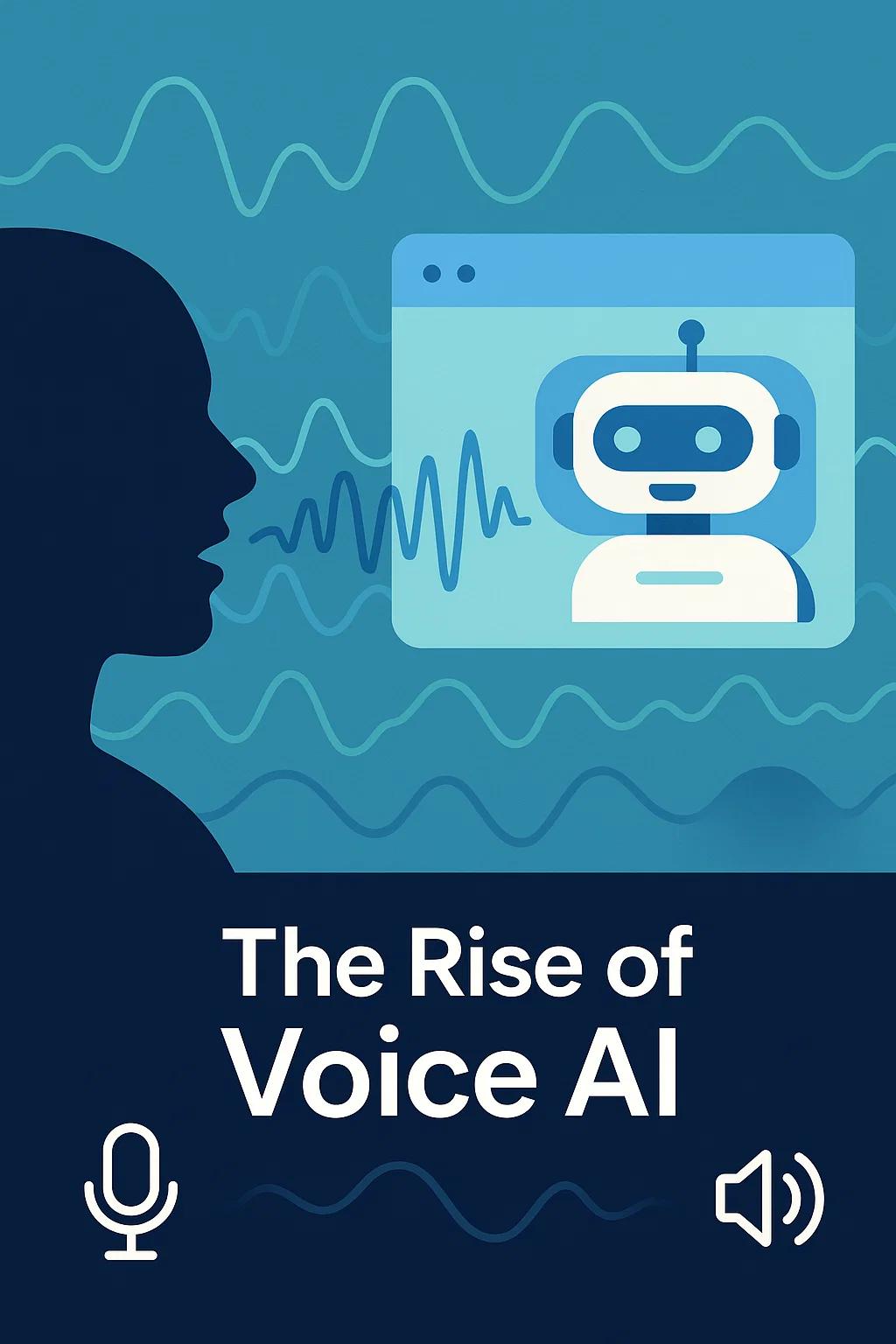Voice-first chatbots are transforming how customers connect with brands. Instead of typing or clicking, users now speak to intelligent systems that understand natural language, emotion, and intent. This new generation of AI-driven voice interfaces is setting a new benchmark for immediacy, personalization, and accessibility in customer experience.
As businesses rush to adopt voice-first solutions, professionals entering the AI and CX space need more than surface-level knowledge. At Refonte Learning, our AI and chatbot programs teach exactly how these systems work, how to build them, and how to align them with business outcomes. Whether you’re a beginner or an experienced customer service leader, understanding voice-first chatbot technology is essential for staying relevant.
1. The Rise of Voice-First Chatbots
Voice-first chatbots are not just an upgrade—they represent a paradigm shift in how customer service operates. With the rise of smart speakers, voice assistants, and conversational AI platforms, customers expect natural, hands-free interaction with brands.
Companies like Amazon, Google, and Apple paved the way with Alexa, Assistant, and Siri. However, voice-first systems are now being deployed across industries—from healthcare triage bots to retail ordering assistants. Unlike traditional chatbots that rely on text-based input, voice-first systems leverage automatic speech recognition (ASR), natural language understanding (NLU), and context-aware dialogue management.
At Refonte Learning, we train learners to integrate these components into robust customer engagement systems. Through guided internships, students work with frameworks like Dialogflow CX, Amazon Lex, and Rasa Voice, gaining exposure to real-world scenarios that mimic enterprise-level deployments.
Key Benefits
Accessibility: Voice-first systems cater to visually impaired or multitasking users.
Speed: Voice interfaces reduce cognitive load, delivering quicker responses.
Personalization: Voice tone analysis enables emotion-aware responses.
According to industry reports, 70% of customers prefer voice-based interactions when multitasking, emphasizing its practical advantage.
2. The Technology Behind Voice Chatbots
Building a voice-first chatbot requires an integrated tech stack. Unlike text bots, these systems must interpret spoken language accurately, process it contextually, and respond naturally.
Core Components
Automatic Speech Recognition (ASR): Converts speech into text.
Natural Language Understanding (NLU): Identifies user intent and entities.
Dialog Management: Determines response flow based on context.
Text-to-Speech (TTS): Converts the response back into natural voice.
Each stage is critical for delivering fluid, human-like interactions. Refonte Learning’s curriculum breaks down these layers using Python, TensorFlow, and open-source tools like Kaldi and Mozilla DeepSpeech. Students learn how to fine-tune models for different accents, speech speeds, and noise conditions—an essential skill for building inclusive customer service bots.
Voice AI in Action
Banking: Automated account verification and fraud alerts.
E-commerce: Voice-guided shopping assistants.
Healthcare: Virtual nursing triage via patient voice input.
Refonte Learning helps professionals simulate these workflows through project-based labs, enabling practical exposure to voice UX design and NLP model integration.
3. Implementing Voice Chatbots in Customer Service
Successful deployment requires alignment between technology, user experience, and business goals. Voice-first bots must deliver seamless support without frustrating users.
Best Practices
Omnichannel Integration: Ensure the voice bot syncs with CRM and support platforms.
Tone Consistency: Maintain brand personality in synthesized voices.
Error Handling: Implement fallback phrases and escalation paths to human agents.
Continuous Learning: Use AI feedback loops to refine responses.
Refonte Learning’s AI operations training emphasizes lifecycle management—how to train, test, and monitor voice bots post-deployment. Learners explore customer sentiment analytics, multi-lingual support, and ethical voice AI design, preparing them for enterprise-ready roles.
Case Study Example
A global retailer integrated a voice-first bot for order tracking and returns. Within 60 days, it reduced human agent load by 40% while improving customer satisfaction scores by 25%. This outcome underscores the importance of coupling intelligent design with real-world data—precisely the kind of applied skillset Refonte Learning develops.
4. Challenges and Ethical Considerations
While voice-first systems enhance accessibility, they also introduce new challenges around privacy, data quality, and user trust.
Accent Bias: AI models may misinterpret underrepresented speech patterns.
Data Privacy: Continuous voice recording raises compliance concerns under GDPR and CCPA.
Over-Automation: Poor design can make experiences feel robotic.
Refonte Learning’s ethics-in-AI modules train professionals to mitigate these risks using privacy-preserving AI, federated learning, and transparent data policies. Students also learn how to test voice interfaces inclusively using diverse datasets and feedback loops.
5. The Future of Voice-First CX
Voice-first technology is rapidly converging with emotion AI, edge computing, and multimodal interfaces. Soon, chatbots will interpret not just words but vocal tone, pace, and even background noise context.
Future-ready professionals will need hybrid skills: conversational design, AI modeling, and business strategy. Refonte Learning’s specialized programs equip learners to meet this demand through certifications in Conversational AI Engineering, Voice UX, and AI Integration for CX.
As customer service evolves toward automation-first strategies, professionals who master voice-first systems will become indispensable across industries.
Actionable Takeaways
Learn ASR and NLU fundamentals through applied projects.
Prioritize inclusivity and voice tone calibration in design.
Integrate chatbots with CRM for contextual insights.
Continuously train bots using real customer data.
Enroll in Refonte Learning’s AI programs to gain industry-ready expertise.
FAQs
1. What is a voice-first chatbot?
It’s a conversational system that prioritizes spoken dialogue using speech recognition and AI-driven understanding to interact naturally with users.
2. Are voice chatbots replacing human agents?
No. They complement agents by automating repetitive tasks while humans handle complex queries.
3. What skills do I need to build one?
You need familiarity with NLP, Python, speech APIs, and UX design—skills taught at Refonte Learning.
4. How secure are voice-first systems?
When designed properly with encryption and data governance, they can meet enterprise-grade compliance.
5. Can small businesses use voice bots?
Yes. Scalable cloud tools like Dialogflow and Lex make them affordable for SMBs.
Conclusion + CTA
Voice-first chatbots are the new cornerstone of intelligent customer engagement. As organizations race to deploy these systems, the demand for skilled professionals is soaring. Refonte Learning empowers learners to lead this transformation through structured AI training, live mentorship, and project-driven internships.
Ready to build your future in AI-driven CX? Join Refonte Learning today and start mastering voice-first chatbot development.
